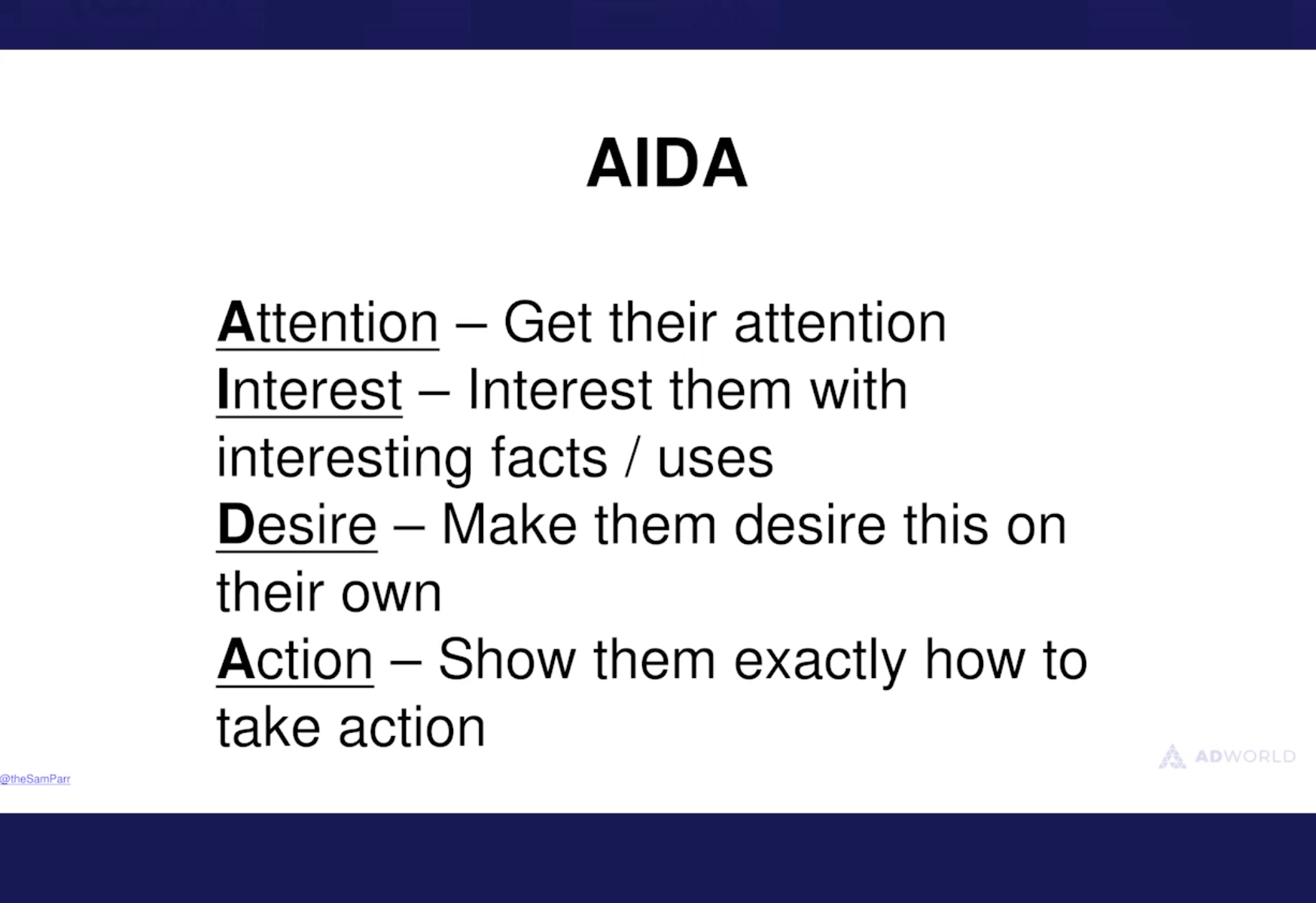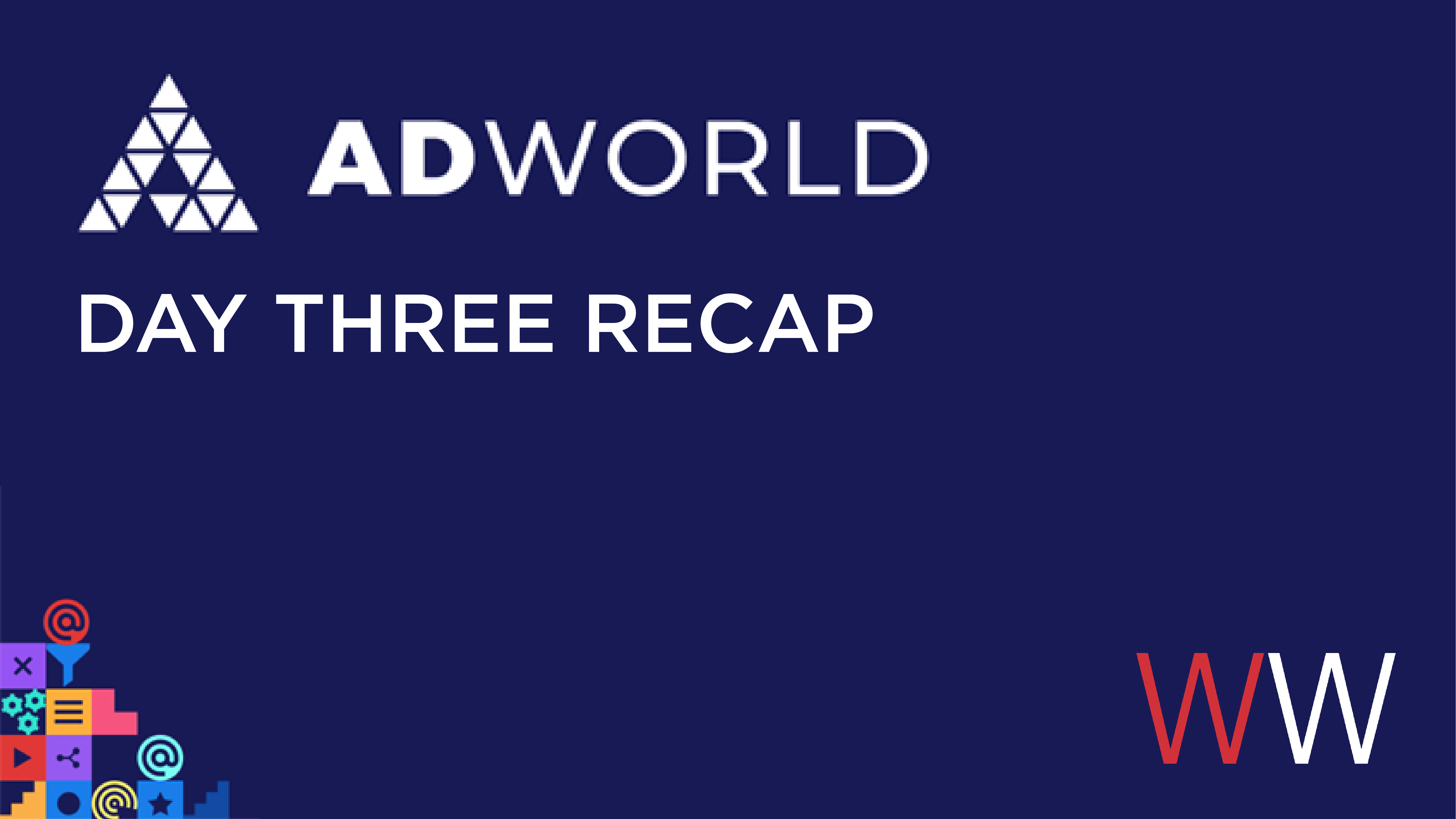By: Holly Gonzalez – Account Executive @ Williams Whittle
Here is the final recap of the Ad World Conference 2020. Make sure you check out day one and two on the blog as well.
1. Innovation Equals Creativity: How TikTok Reached New Customers in the Funnel – Jacklyn Dang, Brand Partnerships Manager at TikTok
TikTok is much more than the app that entertained many of us during the height of the pandemic while we were stuck indoors trying to pass the time. The app is a place where brands are showcasing their product or service in untraditional ways. Brands are even growing audiences specifically within the platform itself. The platform is full of its own stars that are exclusively famous on the app, so much so that TikTok developed a creator marketplace for brands to find partners that can be searched for by target demographic. The platform makes it easy for any brand to showcase themselves by providing tools that use uploaded photos and videos and put them together with suggested music. And sound is key because the majority of users engage with the platform with the sound on, which is not always the case for other apps.
2. Sam Parr’s Copywriting Tips that Built The Hustle into an 8-figure Newsletter – Sam Parr, Founder at The Hustle
This session brought some fun clarity to making copywriting easy. Parr’s formula is called AIDA.

Photo Credit- Sam Parr, The Hustle
Parr reminded writers to keep their language simple, he recommended using the Hemmingway App to determine the reading level of your writing and keep it about at a 7th-grade level. His final reminder was the most paramount, which was to keep in mind that a reader’s most important subject matter is themselves. He illustrated this with copy about a real estate agent which was more effective when the writer took out points about their dedication to service and instead shared specific statistics on their success that would give the reader a clear understanding of the agent’s benefit to them rather than empty promises. Finally, Parr advocated against the use of jargon buzzwords that crowd effective copy, rather simplify, share clear points, and make a call to action.
3. How to Survive the Impending Digital Marketing Apocalypse of the 2020’s – Mark Joyner, Digital Ads Pioneer, Author, Founder and CEO at Simpleology
At first glance, it seemed that this session is about COVID-19’s impact on marketing, but it actually goes beyond that to discuss technological improvements that are moving forward in this decade that marketers need to prepare to manage. Joyner says that everything is getting faster, smaller, more powerful, more available, and cheaper and that the “new normal” is constant disruption. He claims that the 2020s will bring a paradigm shift from tech, much like agriculture brought to society which changed the way we lived from hunter-gather, to ultimately city dwellers. In order to combat this, we must diversify our marketing tactics and not put our “eggs in one basket” so to speak. This is particularly important as it relates to having advertising in only one ad platform. Instead, Joyner says to “build a table with many legs” or a digital marketing strategy that utilizes many sources of advertising to share your brand message.
4. Rebooting Content Marketing In a Post-Advertising World – Robert Rose, Chief Strategy Officer at The Content Advisory
This session provided a look into how organizations can shift their marketing efforts beyond paying for media and traditional advertising. This can be done by creating content related to your business that provides value to potential customers, capturing their attention, and resulting in an action. Rose explained this in comparison to the typical customer journey funnel which first captures an audience, converts them to visitors, who then become shoppers, then turn into customers and finally advocates. This funnel is focused on finding a market to move through the purchase path. Content marketing is different because its goal is to build an audience that becomes a pool of customers that continually adds business value. The funnel for this method starts with a niche audience that becomes engaged with content, then subscribes to receive more content. That subscribed audience can be addressed on the timeline of the business and modeled against business goals that multiples value.
This sounds great, but how does an organization get to this point, especially if they are operating with limited staff and budget? Rose offered different models of content marketing that grow more involved with each step. The first is the “player model” which produces organic content with the goal of driving traffic to the business. The next level is the “performer model” where the content produced becomes more substantial like webinars, magazines, and podcasts that independently bring an audience to the business because of the value they provide. Then there is the “processor model” which is not focused on content creation but making the standards for content created by the business. The final model is the “platform model” which is when the content marketing department of your business can essentially break off to another branch of the company and earn an income of its own like a media group.
Content marketing cannot be created overnight, but the session brought up good thought to how organizations can add a level of marketing to their mix that does not just tell about their product or service but actually provides resources to potential customers which then captures their attention and trust.
5. Allbirds Presents: The Future of Brand Collaboration – Julie Channing, Vice President of Marketing at Allbirds
The last session of the conference was a fun one that was presented in a laid-back Q&A format with Allbirds’ vice president of marketing. The focus was on collaborations. To start, Channing noted that collaborations should have an end goal and should not be done for the sake of adding another brand partnerships to social feeds. Allbirds as a company prides itself on providing a product- shoes, that are sustainably made. Their company also provides their lightly used shoes to communities in need and uses recycled packaging. When picking collaborators, Channing makes sure that the partners not only have strong values but that they are experts in their respective fields and can bring value to the partnership. This could be in terms of how they split the responsibilities or the resources a partner has from their agencies that can provide enhancement or increased reach to the collaboration. To close out the talk, Channing shared her top of mind marketing thoughts which wrapped up the conference well. First, was to welcome change and ambiguity in these current times and use it as an opportunity to become meaningful in the work you do. The second, was to get to know your customers again, because like everyone else, their lives have changed. Finally, be a good teammate internally that embraces empathy and vulnerability.
This conference provided a wealth of new techniques, refreshers and inspiration. We could only fit a fraction of that in these recap posts, but we hope you learned something new. If you enjoy conference recaps, then check out our day one and two recaps of the MAC Summit.



